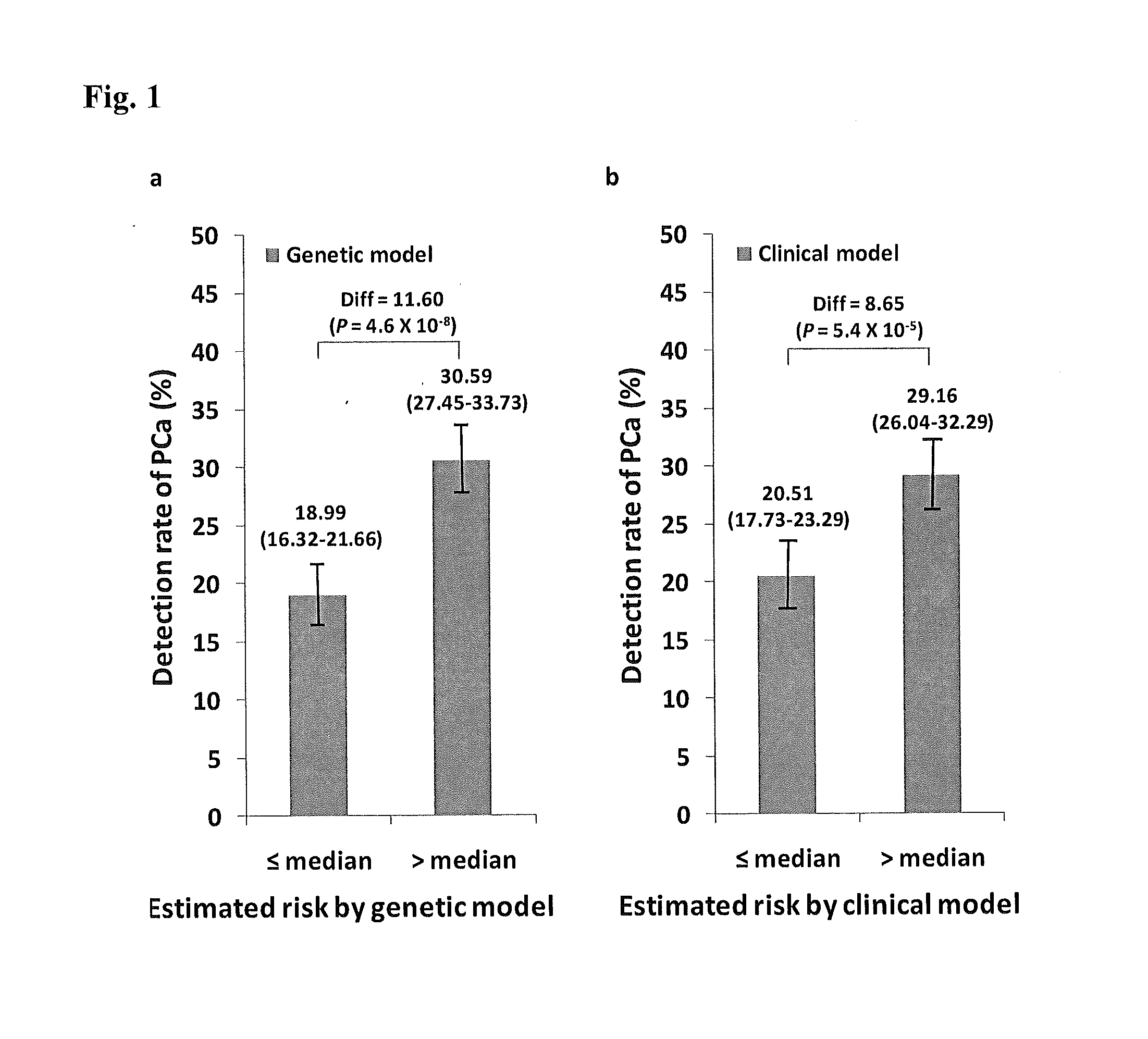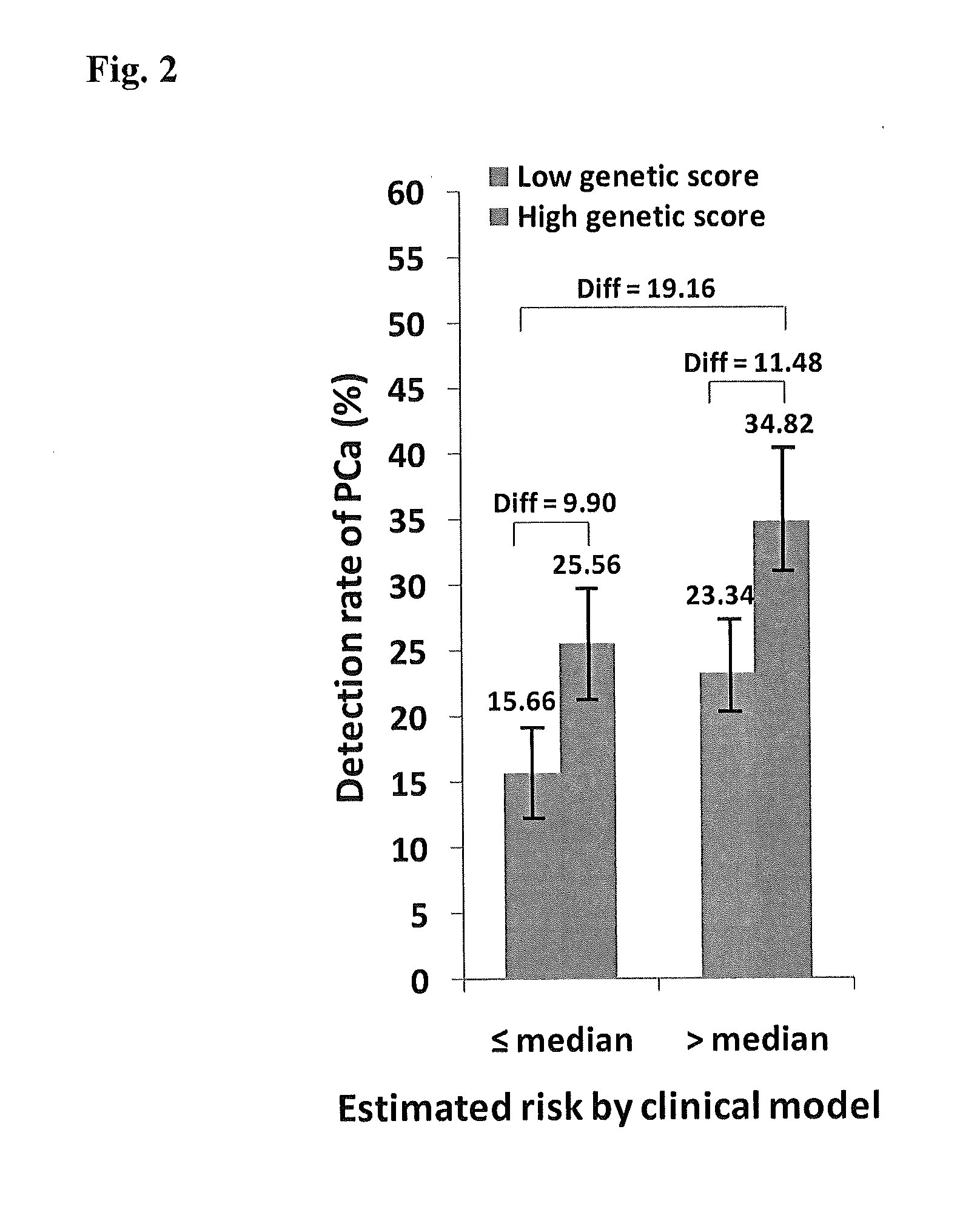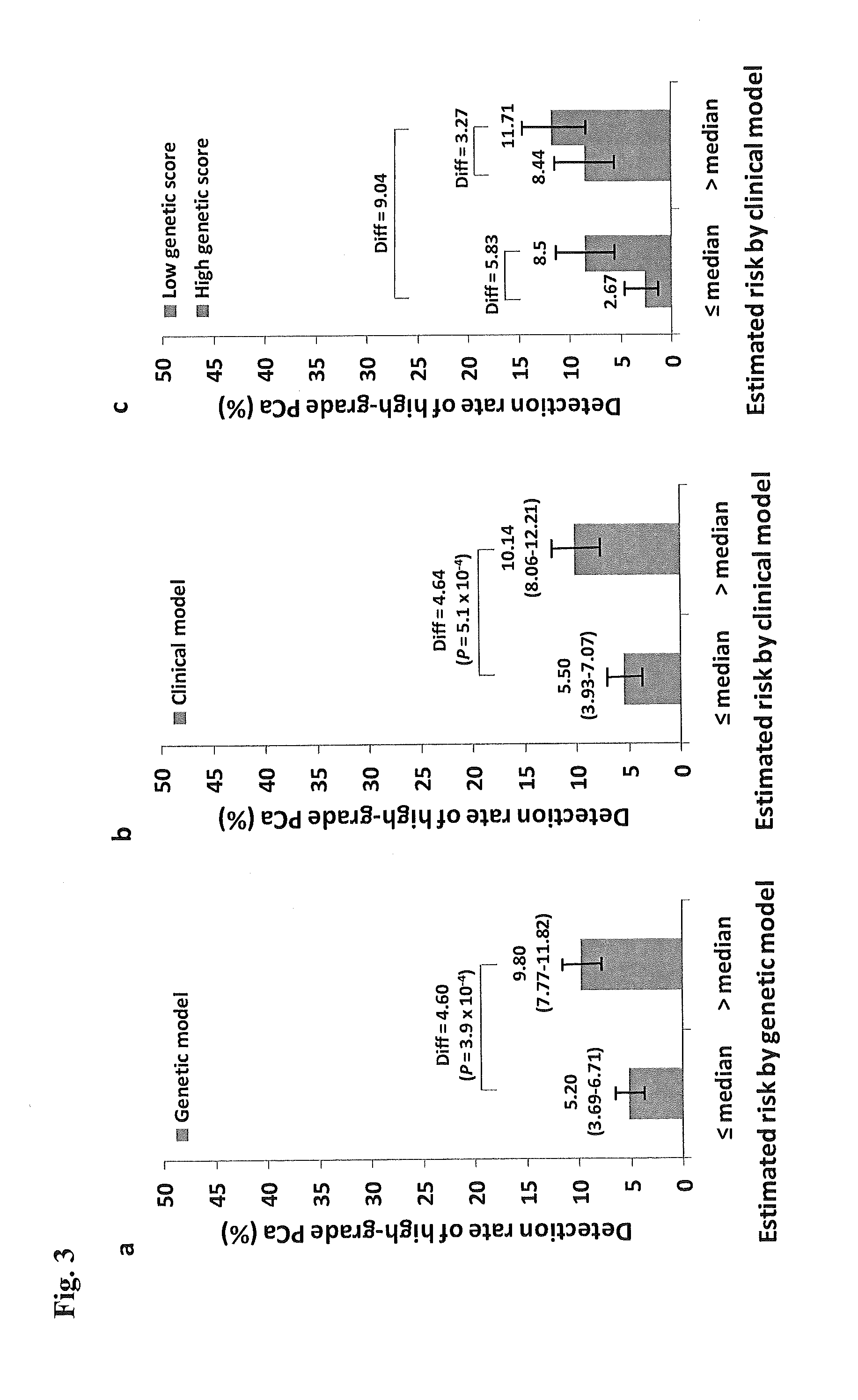Methods and Compositions for Correlating Genetic Markers with Prostate Cancer Risk
a technology of genetic markers and compositions, applied in combinational chemistry, biochemistry apparatus and processes, library screening, etc., can solve the problems of difficult to predict the outcome of prostate biopsy and difficulty in predicting men at elevated levels
- Summary
- Abstract
- Description
- Claims
- Application Information
AI Technical Summary
Benefits of technology
Problems solved by technology
Method used
Image
Examples
example 1
Patient A
[0061]A 40 year old Caucasian man with a significant family history of prostate cancer with his father and paternal grandfather dying of the disease, sees his primary care physician, asking him about PCa risk and if and / or when to begin prostate cancer screening. He is referred to his urologist who counsels him about the risks and benefits of prostate cancer screening and offers him a genetic test based on 33 SNPs which can measure his baseline risk for PCa. He accepts and has a sample of his nucleic acid tested.
[0062]He sees his urologist who goes over the report of the genetic test, which describes the patient's risk for PCa based only on his genetic profile in several formats:[0063]CRR: 2.40[0064]Percentile risk: 96th percentile[0065]Absolute risk: 0.31[0066]PCa risk score: 0.37
[0067]Given the above report, the patient comes to the conclusion that he is at high risk for PCa and decides to pursue PSA-based PCa screening. This is based on the fact that he is at 2.4 fold in...
example 2
Patient B
[0068]Patient A's 50 year old brother heard from his brother about the above-described genetic test for PCa risk. He had his first ever PSA, which was borderline high at 4.0 ng / ml. He has heard that prostate biopsy is very uncomfortable and would like to avoid it if at all possible. Based on his initial clinical parameters, his urologist offers him a prostate biopsy. He undergoes the genetic testing, which gives him the following result:[0069]CRR: 0.90[0070]Percentile risk: 49th percentile[0071]Absolute risk: 0.12[0072]PCa risk score: 0.19
[0073]On the basis of this report, he concludes that he is at lower risk for PCa and opts to continue to follow his PSA as opposed to proceeding directly to prostate biopsy. He makes this decision based on the subjective judgment that, for him, an absolute risk of 12% is low. In addition, he knows that based on a CRR of 0.9 and a percentile risk of 49th percentile, that the majority of the population is at higher risk than him. He has conf...
example 3
Patient C
[0074]Patient A&B's 60 year old brother heard from his brother about the above-described genetic test for PCa risk. He has been seeing a urologist for five years regarding an elevation in his PSA and he had a negative biopsy two years ago. His PSA is continuing to climb and he and his urologist are considering a repeat biopsy. He sees his urologist to consider what additional information this new genetic test may offer. Together he and his urologist decide that he will have this genetic test done. His nucleic acid sample, along with his clinical information (age, family history, PSA, F / T PSA ratio, prostate volume from his last biopsy and number of negative cores at the time of his biopsy) are sent in for analysis. He returns to his urologist's office for the results of his tests, which are as follows.[0075]CRR: 2.52[0076]Percentile risk: 95th percentile[0077]Absolute risk: 0.32[0078]PCa risk score: 0.37
[0079]Given the above profile information, Patient C decides to undergo...
PUM
| Property | Measurement | Unit |
|---|---|---|
| volume | aaaaa | aaaaa |
| PSA | aaaaa | aaaaa |
| volume | aaaaa | aaaaa |
Abstract
Description
Claims
Application Information
 Login to View More
Login to View More - R&D
- Intellectual Property
- Life Sciences
- Materials
- Tech Scout
- Unparalleled Data Quality
- Higher Quality Content
- 60% Fewer Hallucinations
Browse by: Latest US Patents, China's latest patents, Technical Efficacy Thesaurus, Application Domain, Technology Topic, Popular Technical Reports.
© 2025 PatSnap. All rights reserved.Legal|Privacy policy|Modern Slavery Act Transparency Statement|Sitemap|About US| Contact US: help@patsnap.com



